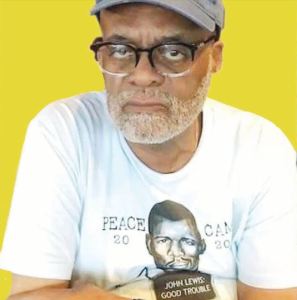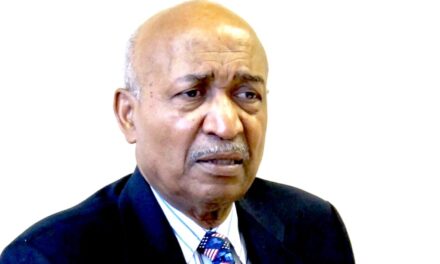By Ralph E. Moore Jr.,
Special to the AFRO
In case you missed it, May 19 of this year marked the day that Malcolm X would have celebrated turning 98 years old. Did you see a big parade downtown? Was that day a holiday anywhere? Was there at least a Malcolm X Day sale at your favorite store? No? Why not?
The answer is simple: in America, those types of things are routinely and annually done for another hero Martin Luther King Jr.
Both men, obviously, were civil rights leaders. Both had strong followings, and both made a difference in society. But somehow, Martin has been more revered than Malcolm in many circles around the globe. Back in the sixties and seventies, Martin was seen as the integrationist and hero while Malcolm was interpreted as the separatist and the hater– no matter how vocal he was about his evolution after making the pilgrimage to Mecca.
Martin advanced non-violence as the strategy for attaining racial justice. Malcolm believed strongly in self-defense against police brutality and lynchings. Martin preached love for all; Malcolm was falsely thought to teach hate (even if it were hate produced in reaction to White supremacy).
It is easy to see how Martin’s words and approach were more palatable to the public, more comfortable for fragile personalities. Malcolm was tough in his message and in his delivery; he scared people– especially White people. So it came to be that Martin, though he suffered a serious loss of popularity at the time of his death, was the more acceptable choice of the two Black leaders to mainstream America.
What is fascinating is the reality that there were distinct similarities in the lives and work of the two men. What is obvious is that both men were assassinated at age 39. Both were sons of Baptist preachers who became ministers themselves: one a Baptist, the other a Muslim. But there are other features of the two lives which should bring us to see them as more unified than divided prophets.
Malcolm and Martin had followers in this country and around the world. Their respective faiths brought them love and support from masses of Muslims and Christians. 1964 was a substantial year in the lives of the two civil rights leaders: Malcolm left for Mecca, Saudi Arabia in April of 1964 to take the pilgrimage required of Muslims (the hajj). While there, he experienced metanoia (a conversion experience) wherein he renounced racial separatism and saw the brotherhood and sisterhood of all in practice for the first time in his adult life.
He returned to the United States a changed man– but would the country recognize his evolution?
Martin, also, traveled overseas but to Oslo, Norway. The Nobel Peace Prize on December 10,1964 was awarded to Martin Luther King Jr. “for his non-violent struggle for civil rights for the Afro-American population,” according to the Nobel Committee.
Martin was informed of his award in a phone call from his wife, Coretta Scott King, early one morning of October 1964. His wife and chief co-worker in justice, Reverend Ralph Abernathy, accompanied him. The idea of brotherhood was raised as the chair of the Nobel Committee handed Martin the award, “He is the first to make the message of brotherly love a reality in the course of his struggle, and he has brought this message to all men, to all nations and races.”
Martin and Malcolm united by the theme of brotherhood in their journeys, again both in 1964.
Incidentally, both leaders had their names changed during their lives.
According to the Research and Education Institute at Stanford, Martin was named Michael King at birth, but his father (Michael Sr.) changed their names to Martin Luther after a 1934 pilgrimage the elder Martin took to Germany where the Protestant reformer’s name captured his attention. Young Michael became Martin Luther King Jr. at age five.
Malcolm was born Malcolm Little and upon becoming a Muslim, he took the last name X to represent his unknown African ancestry and surname. He changed his name again in 1964 to el-Hajj Malik el Shabazz during the aforementioned trip to Mecca,
Both men married strong, professional women: Malcolm married Betty Dean Sanders in 1958. She was a college graduate who became a nurse and eventually an educator at Medgar Evers College in Brooklyn, New York. Malcolm was a high school dropout.
Coretta Scott and Martin met through a mutual friend in Boston where both were studying for their selected professions. On their first date, in 1952, they decided they had a lot in common. He brought up marriage on their second date. On June 18, 1953, Coretta and Martin were married by his father, and she became known to the world as Coretta Scott King.
Finally, the best symbol of the relationship of Martin Luther King between Malcolm X was when they met for the first and only time on March 26,1964 on Capitol Hill. Both were in Washington in support of the Civil Rights Act of 1964 before Congress. Martin was there to testify before the Senate and Malcolm surprisingly was there to show support for the bill.
“I’m throwing myself into the heart of the Civil Rights struggle,” Malcolm declared at the time.
So, the final thought goes to the recent birthday celebrant who was the least understood and celebrated–Malcolm X.
Martin’s place of honor is more vaulted, but fans of Malcolm are deeply devoted to him.
Imam Earl El Amin, of the Muslim Community Center of Baltimore, recently reflected on Malcolm X.
“In their tradition, Muslims recognize Muhammad to whom the Quran was revealed over 1,400 years ago as the last Prophet. We also accept Abraham, Moses, Jesus and many others named in the Quran. As Muslims, we continually applaud the work that Malcom was blessed to do– not just raising consciousness throughout the world, but promoting freedom, justice and equality for all. His teachings and vision for humanity are still relevant today.”
I dare say Malcolm X and Martin Luther King, Jr. were both true prophets of our time.
They continue to inspire so many people, so they both deserve to be celebrated equally in the spotlight.
The post Malcolm X and Martin Luther King, Jr. – why aren’t both leaders celebrated at the same level? appeared first on AFRO American Newspapers .











